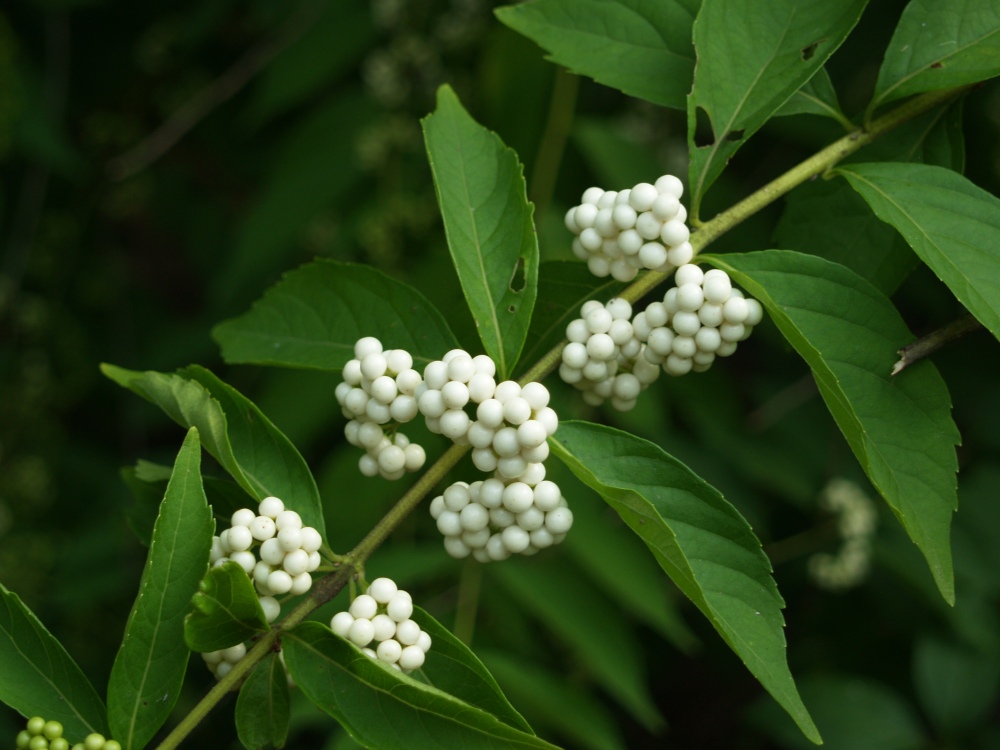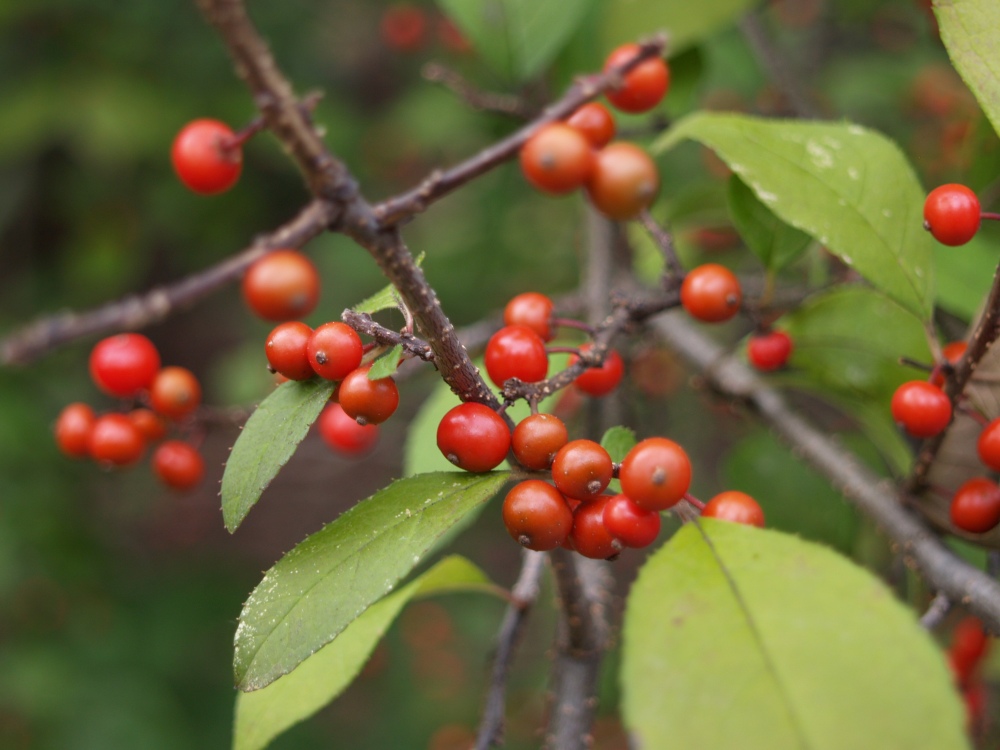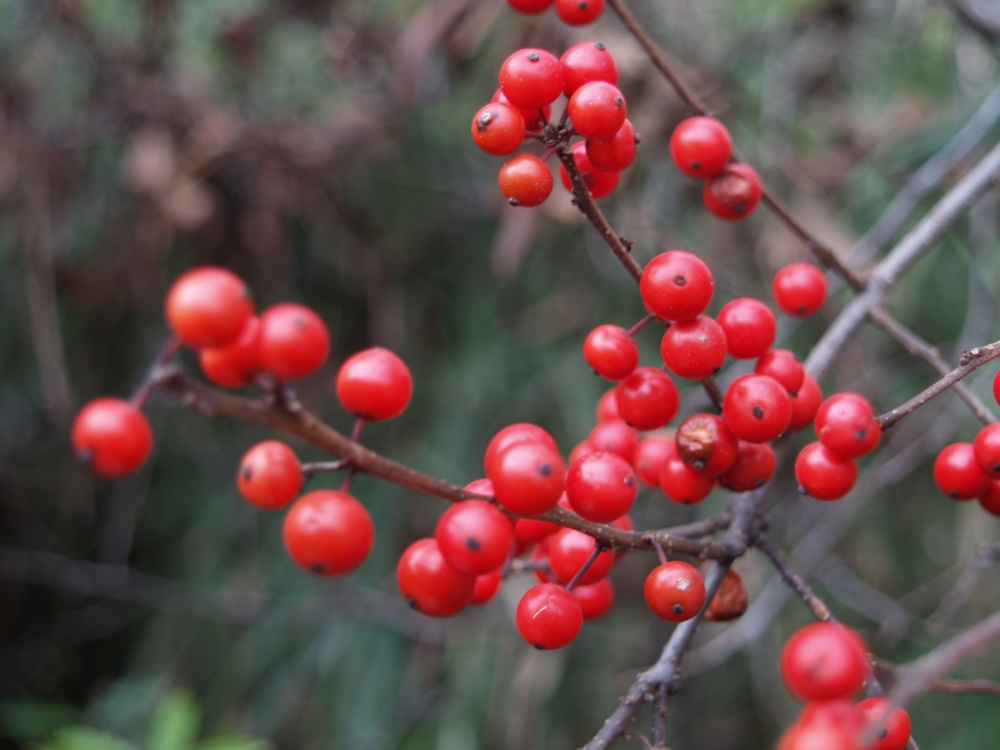Through spring and summer the foliage and flowers of beautyberry (Callicarpa dichotoma ‘Issai’, below) are unremarkable. The dull green leaves are carried on arching stems that are hardly graceful, and even when fully in flower the ornamental value of beautyberry is forgettable. But, in late summer the tiny blooms fade and small berries appear, which progressively turn to glossy purple along the length of the stems. Now, it is quite marvelous, and worthy of the lengthy wait.
A beautyberry (Callicarpa americana) native to the southeastern US has similar purple berries and coarsely textured branching, but it is less cold hardy, and it grows larger than the Asian import that is most often found in garden centers. Several purple and white berried cultivars are commonly available, with only slight variations in size and color of the berries. In my garden the white berried ‘Albifructus’ (Callicarpa dichotoma ‘Albifructus’, below) grows larger than ‘Issai’, and berries are more abundant growing in part sun. The white berried beautyberry is growing in damp soil, and several purple berried shrubs are in bone dry shade, so it will tolerate a wide range of conditions.
Beautyberry is late to leaf in spring until just after you have given up on it and checked to see if it’s still alive, and in my garden a foot or two of dead wood must be cut back annually when it begins to leaf. This sounds worse than it is, and it’s not unusual for autumn flowering, semi woody shrubs such as callicarpa, buddleia, and caryopteris. I wait until the shrubs show their first growth in late April, and chop out the dead branch tips above this. Clean up of the dead twigs takes longer than the pruning, and I’ll admit to sometimes stashing the debris beneath the shrub for a month or two until I get around to it again.
I have mixed results from the garden’s ‘Sparkleberry’ hollies (Ilex verticillata ‘Sparkleberry’, above). One year they berry heavily, and the next almost not at all. I haven’t planted a pollinator, and I suspect that the problem is that the flowering of the male holly is undependable, wherever it is. Several times I’ve planned to plant a male closer to the females, but those times have coincided with years when the hollies had berries, so I’ve been distracted in other directions. Really, this seems a simple task, and the deciduous hollies are not particular about where they’re planted, so planting a male to make it easy on the bees should not such a big problem. But, apparently it is.
In any case, there is a much better than average crop of red berries this year, so there’s every reason for me not to think about it again until next year. For the gardener who is not familiar with the native, deciduous hollies, these have nothing in common with any of the evergreen hollies. First, and obviously, they drop their leaves, but also their form is much more open. They will tolerate nearly full sun, but will grow nicely in shade, and they grow well in dry or damp soils. ‘Sparkleberry’ is not a shrub that is comfortable in the front landscape, except in the most informal designs. I have planted mine so that it peaks from beneath a spring flowering magnolia (Magnolia ‘Jane’) along the driveway so that I’m greeted by the masses of red berries each evening when I return home.
In several weeks the nandinas’ berries will turn from green to red, then the various evergreen hollies will turn. There is one yellow berried holly in the garden ( Ilex meserveae ‘Golden Girl’, above), and since it was planted a year go it has declined a bit, so it has fewer berries this year. I suspect that its health will improve in its second year in the ground, and next year I expect a heavy crop of yellow berries to accompany the red.
Hi Dave – They’re superb – the purple berries are real jewels.
Great post!
I too love the look of those beautyberries, and planted one of them just this summer.
Your sparkleberry photos looked exactly like those of a bush in my back yard that my wife planted years ago. But she identified them as “winterberry” shrubs. Web photos seemed to verify that. Which raises the question as to how a sparkleberry differs from a winterberry. Maybe sparkleberry is a cultivar of a winterberry?
Winterberry is a common name for the native holly, and ‘Sparkleberry’ is the cultivar name for this selection. A cultivar is propagated asexually, usually from rooted cuttings so that they are clones of the parent. So, ‘Sparkleberry’ is a winterberry, probably selected for its heavier crops of berries.